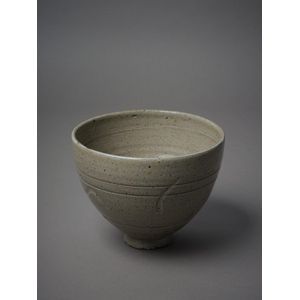Crum Brickworks Manganese Slip Bowl with Carved Bands
Ian Firth, rare and early Crum Brickworks bowl, glazed with a manganese slip giving lustrous copper effects, decorated with incised and carved bands (two pierced holes to the base, possibly for wiring), impressed potter's mark to the lower side, height 18 cmmm x diameter 23 cm
You must be a subscriber, and be logged in to view price and dealer details.
Subscribe Now to view actual auction price for this item
When you subscribe, you have the option of setting the currency in which to display prices to $Au, $US, $NZ or Stg.
This item has been sold, and the description, image and price are for reference purposes only.
- Incised - A record of a name, date or inscription, or a decoration scratched into a surface, usually of a glass or ceramic item with a blunt instrument to make a coarse indentation. Compare with engraving where the surface is cut with a sharp instrument such as a metal needle or rotating tool to achieve a fine indentation.
- Manganese Glaze - A manganese glaze contains manganese dioxide as a colorant. When fired at high temperatures, the manganese dioxide in the glaze reacts with the clay body to create a range of colors, including brown, black, purple, and deep red.
Manganese glazes have been used to decorate ceramics for thousands of years, and they have been particularly popular in Chinese and Korean pottery. In China, manganese glazes were first used during the Song dynasty (960-1279 AD), and they were later used in the production of Jun ware during the Ming dynasty (1368-1644 AD). In Korea, manganese glazes were used to decorate celadon pottery during the Goryeo dynasty (918-1392 AD).
The glaze can be applied to pottery using a variety of techniques, including brushing, pouring, and spraying. The glaze can be applied alone or in combination with other glazes to create a range of effects, including speckled or mottled surfaces. However these glazes can be difficult to control, as they tend to be very fluid and can easily run or drip during firing. However, this fluidity can also be used to create interesting effects, such as the "hare's fur" pattern that is often seen in Chinese tea bowls.
Manganese glazes are still in use by potters and ceramic artists to create unique and beautiful surfaces on their work.
This item has been included into following indexes:
